Idea by
Samira Boon, Raoul Frese, Iza Awad, Yona Adipurnomo, Anna Sitnikova, Sasha Hughes-Stanton
Studio Samira Boon/ Vrije Universiteit Hybrid Forms Labs
Call for ideas 2020
LABS: Living Aero Bacterial Systems
LABS: Living Aero Bacterial Systems
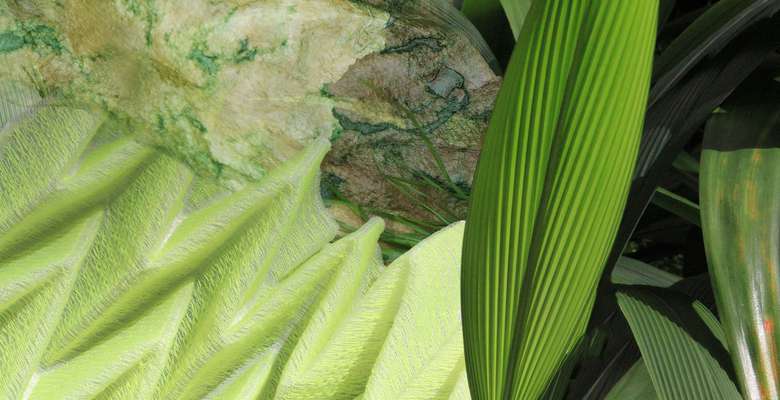
- Systemic changes
How can we design interiors as ecosystems? Making architecture more sustainable is one of today’s crucial challenges. Research by the Dutch National Institute for Public Health and the Environment shows that numerous public buildings, experience problems related to air quality. The effective use of existing micro-ecosystems can offer an enormous potential for the future.
The research “Living Aero Bacterial Systems” (LABS) by Studio Samira Boon, i.c.w. the Vrije Universiteit Amsterdam and Waag Society, aims to develop a new material to improve our interiors with natural processes: a kombucha-based textile that enhances the air quality by integrating mosses and green plants and can be applied in acoustic and wall panels. LABS is a paradigm shift in the traditional design process: a step towards living interiors of the future. We envision that our future ecosystems will be a fruitful interaction between users, technology and microorganisms.
Supported by Creative Industries Fund NL
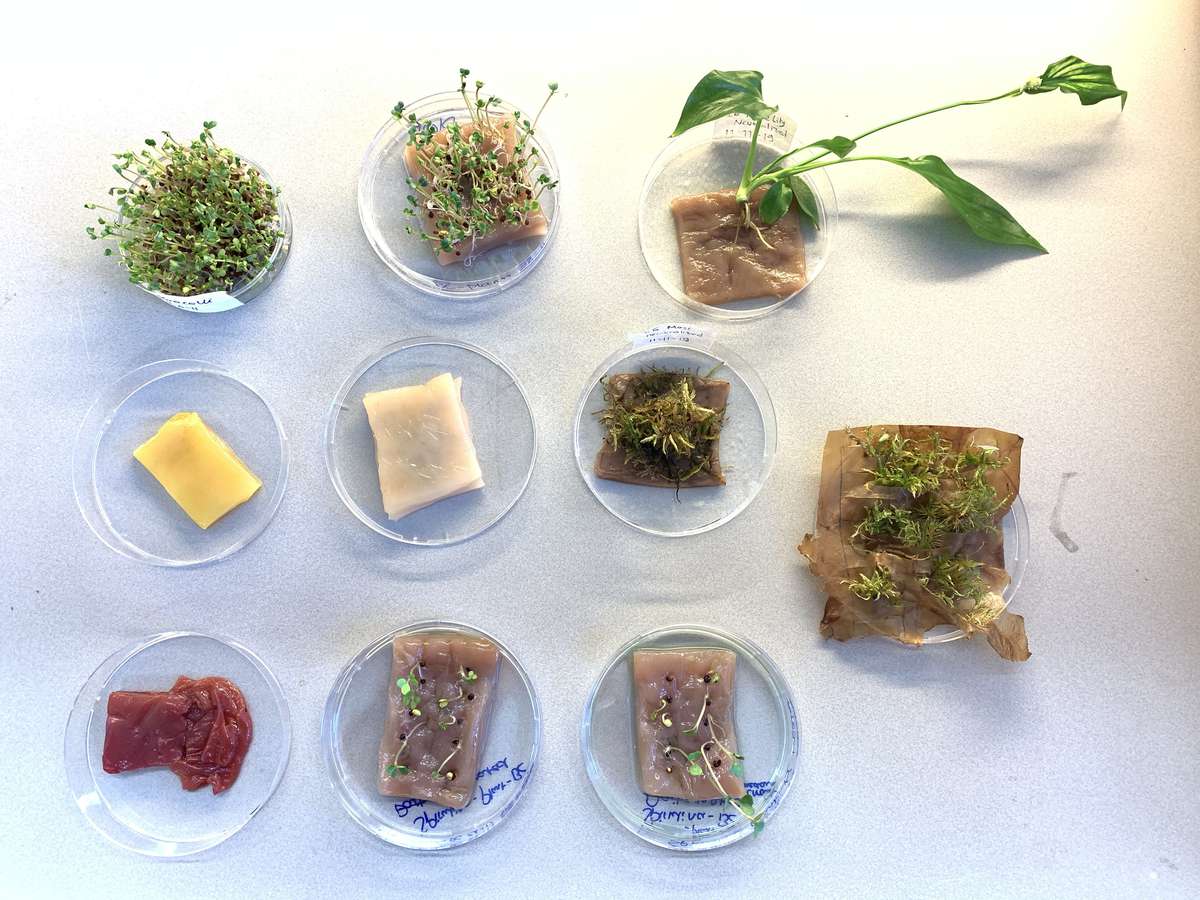
Samples for the research project LABS where different types of mosses and green plants are integrated and grown on a kombucha-based textile to create a unique material with new properties such as air purification. The resulting living textiles can be applied in acoustic and wall panels to improve our interior climate.
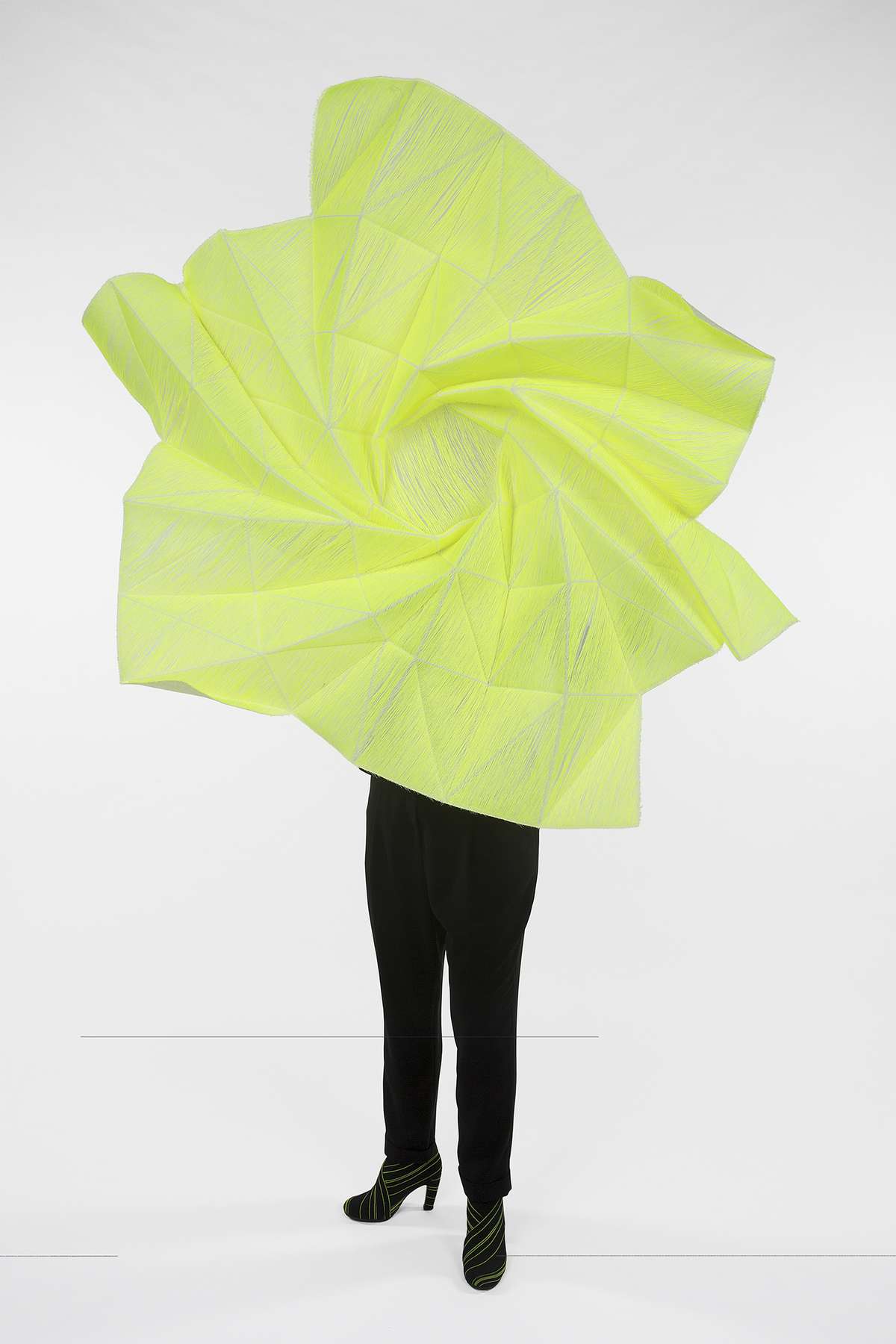
Playing with and adding new properties to textiles is not new to Samira Boon: for the ARCHI FOLDS series of textiles she combines traditional Japanese origami patterns and advances digital weaving techniques to creates 3D textile structures with new characteristics such as self-bearing capacity, flexibility, and different degrees of transparency/opacity to sunlight.
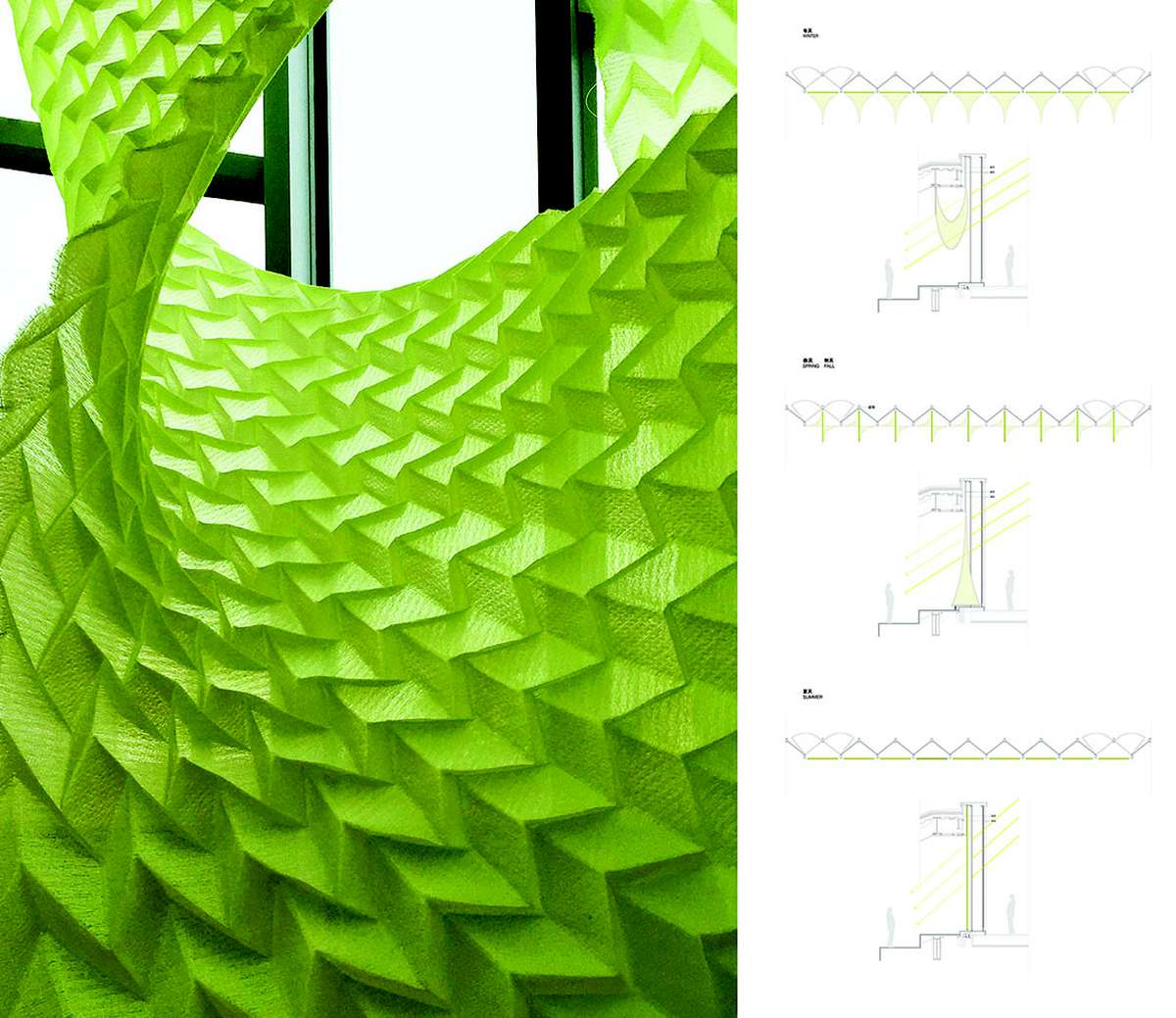
Natural systems and organisms are the main source of inspiration for Studio Samira Boon. Her environments are flexible and dynamic like natural systems to accommodate and regulate changing needs. For the Xiaxing Gallery in Beijing, China, Samira Boon developed flexible curtains that can adapt to the changing needs of sunlight during the seasons.
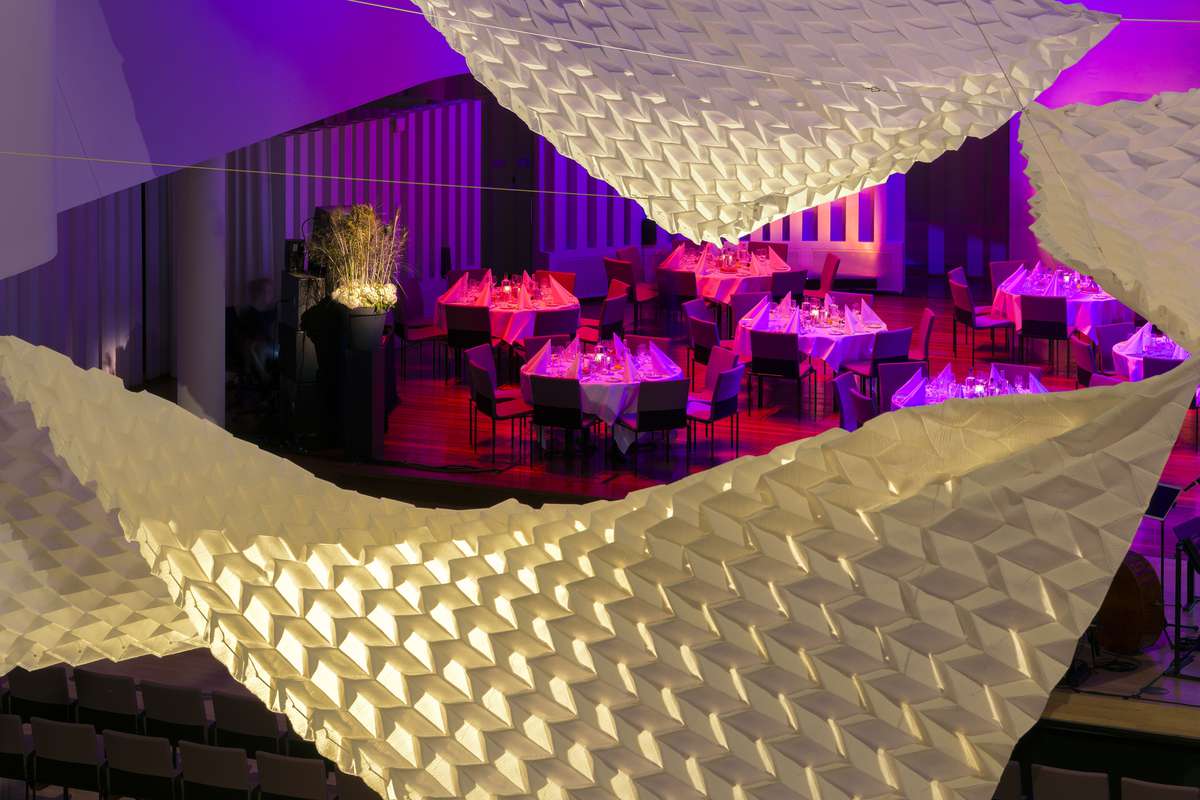
ARCHI FOLDS at Theaters Tilburg, the Netherlands. This 3D textile installation by Studio Samira Boon transforms the large concert hall into a smaller intimate space when used for smaller other events, thus making the space multi-functional.
LABS: Living Aero Bacterial Systems
LABS: Living Aero Bacterial Systems

- Systemic changes
How can we design interiors as ecosystems? Making architecture more sustainable is one of today’s crucial challenges. Research by the Dutch National Institute for Public Health and the Environment shows that numerous public buildings, experience problems related to air quality. The effective use of existing micro-ecosystems can offer an enormous potential for the future.
The research “Living Aero Bacterial Systems” (LABS) by Studio Samira Boon, i.c.w. the Vrije Universiteit Amsterdam and Waag Society, aims to develop a new material to improve our interiors with natural processes: a kombucha-based textile that enhances the air quality by integrating mosses and green plants and can be applied in acoustic and wall panels. LABS is a paradigm shift in the traditional design process: a step towards living interiors of the future. We envision that our future ecosystems will be a fruitful interaction between users, technology and microorganisms.
Supported by Creative Industries Fund NL
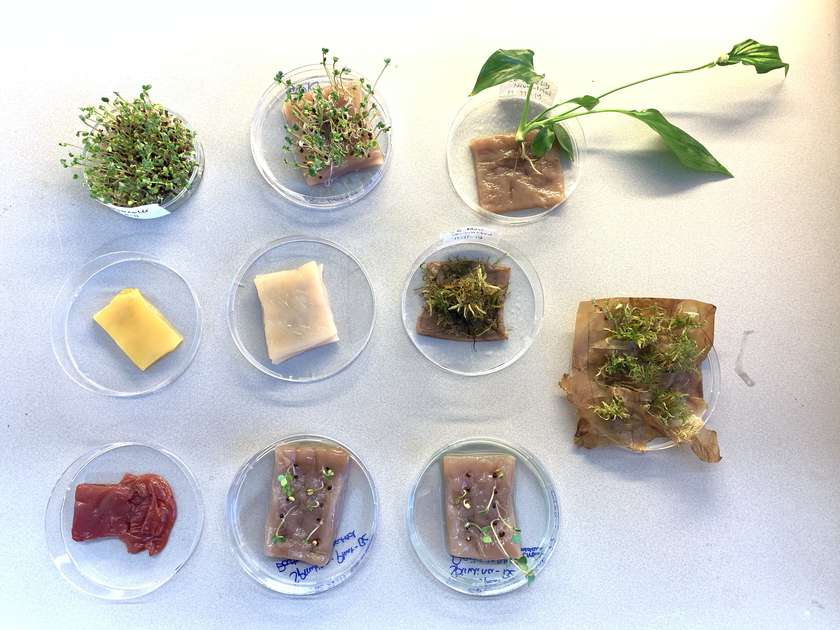
Samples for the research project LABS where different types of mosses and green plants are integrated and grown on a kombucha-based textile to create a unique material with new properties such as air purification. The resulting living textiles can be applied in acoustic and wall panels to improve our interior climate.
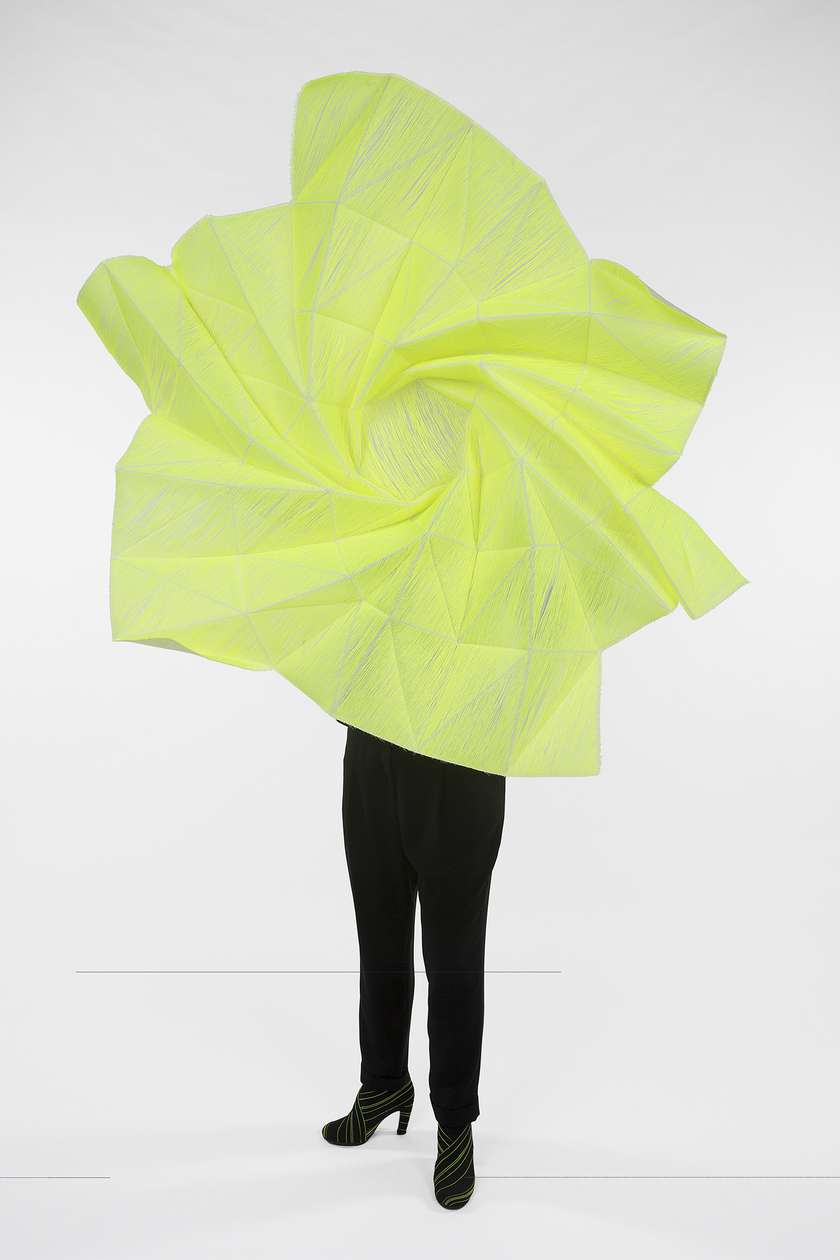
Playing with and adding new properties to textiles is not new to Samira Boon: for the ARCHI FOLDS series of textiles she combines traditional Japanese origami patterns and advances digital weaving techniques to creates 3D textile structures with new characteristics such as self-bearing capacity, flexibility, and different degrees of transparency/opacity to sunlight.
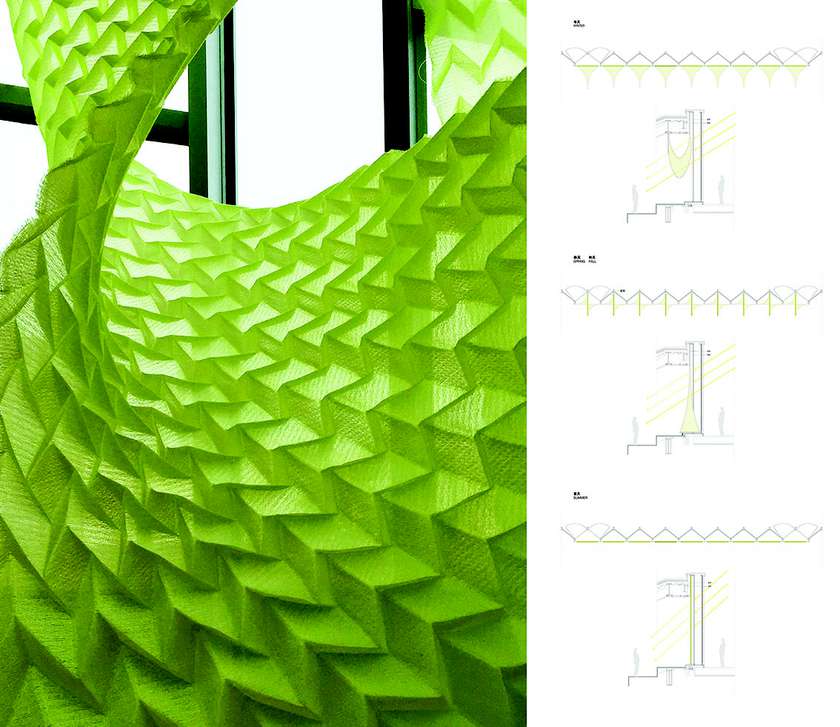
Natural systems and organisms are the main source of inspiration for Studio Samira Boon. Her environments are flexible and dynamic like natural systems to accommodate and regulate changing needs. For the Xiaxing Gallery in Beijing, China, Samira Boon developed flexible curtains that can adapt to the changing needs of sunlight during the seasons.
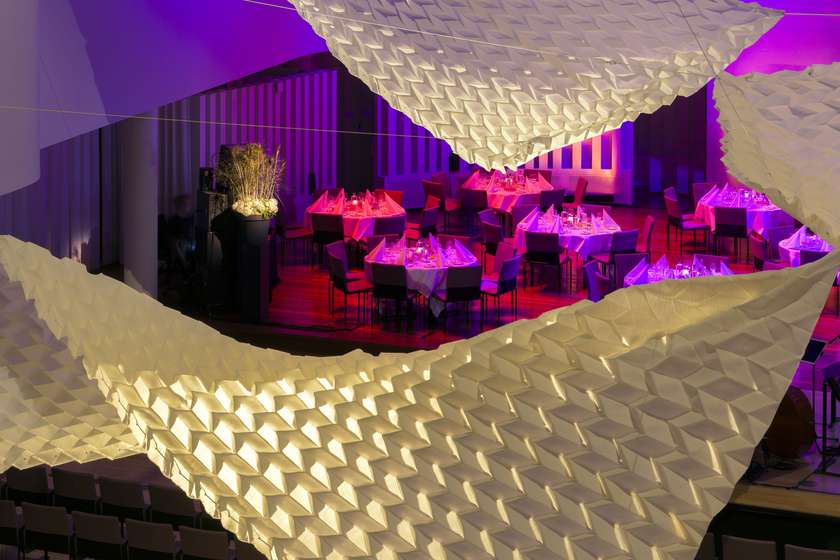
ARCHI FOLDS at Theaters Tilburg, the Netherlands. This 3D textile installation by Studio Samira Boon transforms the large concert hall into a smaller intimate space when used for smaller other events, thus making the space multi-functional.